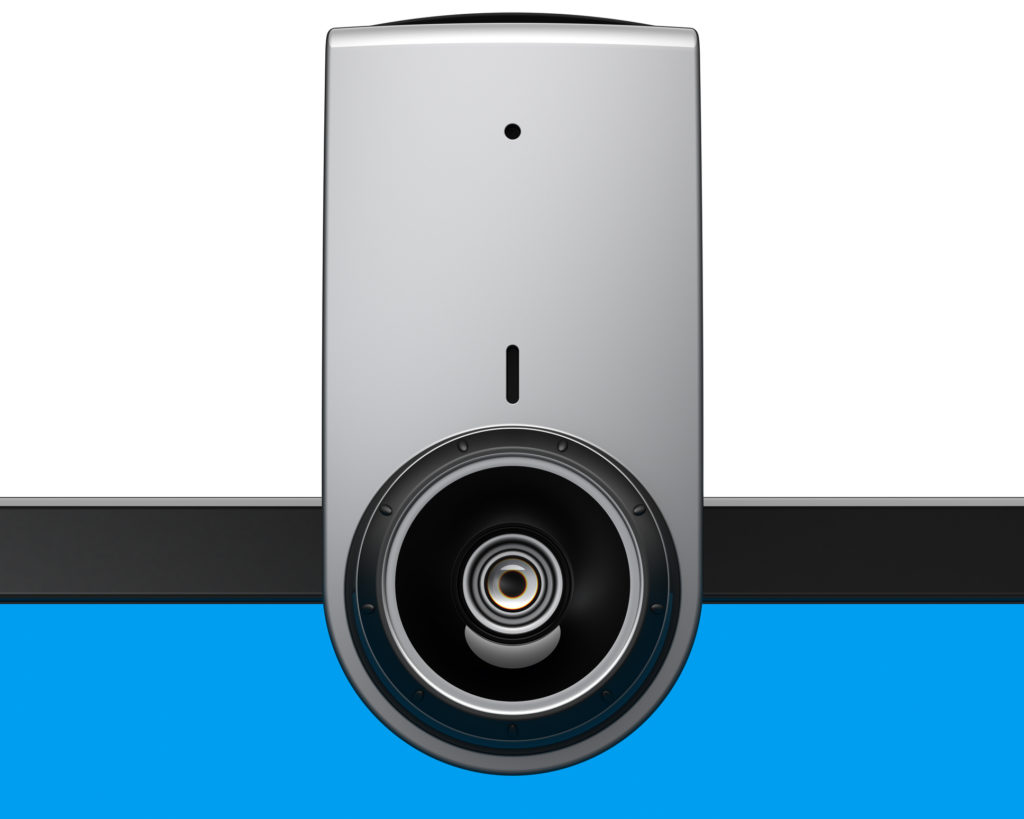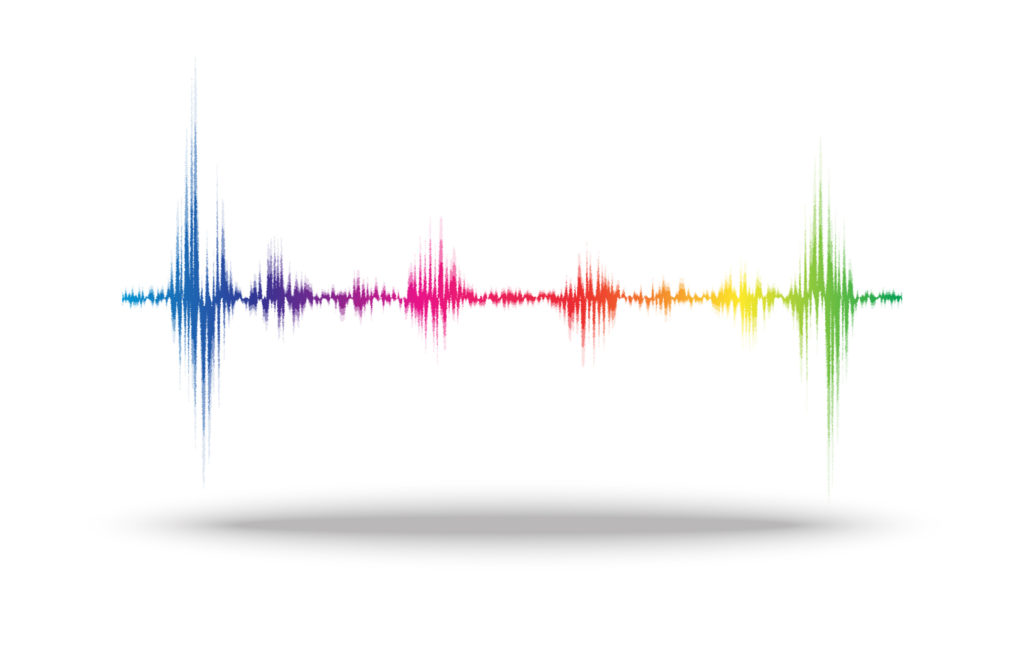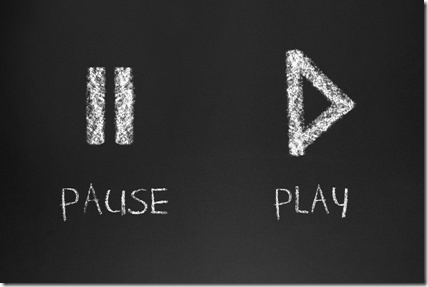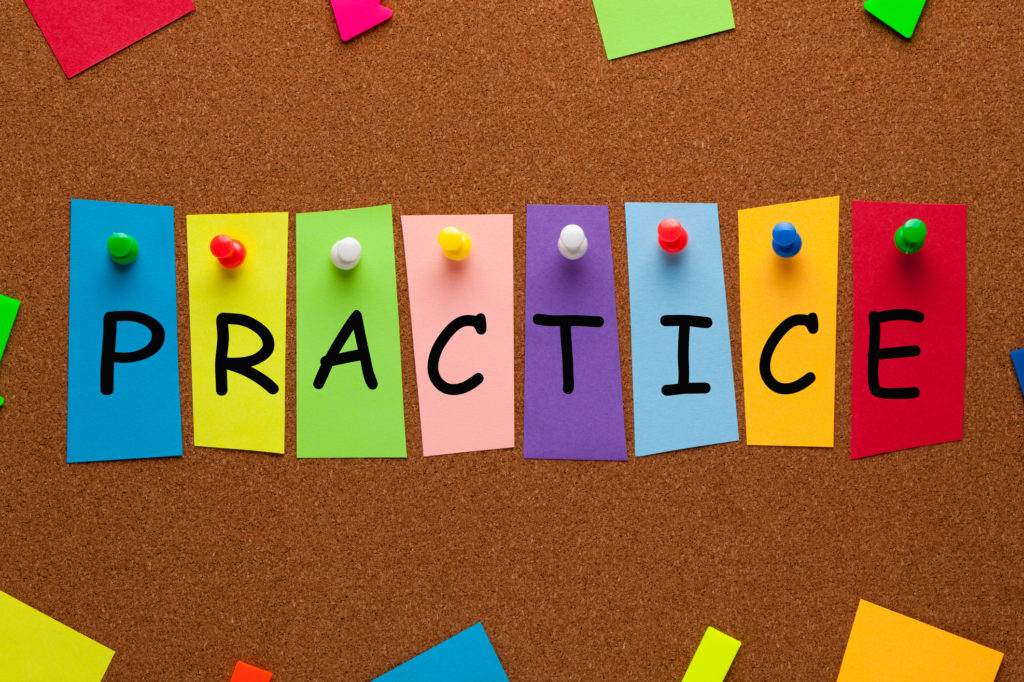Public Speaking Report 9: 10 Ways To Be a Dynamic Virtual Presenter

What if you can’t see your audience?
After all, one of the keys to a successful presentation is a presenter’s ability to read the room. Does your audience have their eyes locked on you? Are they smiling? What’s that frown all about from the guy in the second row?
When your audience is in person, you can, rather quickly, see if your audience is engaged and present, glued to their devices, or a few blinks away from a snooze. By tuning in to the emotions and energy in the room, you can adjust and continually readjust to keep your presentation engaging and meaningful.
But if your audience is a virtual one, things get a bit more challenging.
How do you present and hold attention when your audience can’t see you and you can’t see them?
Presenting to audience members who believe they can multitask to their hearts’ content is indeed a challenge. Since you can’t see them during a virtual presentation, it’s quite possible they will decide to split their attention between your words and all those other tasks that have piled up, such as reading and responding to emails, getting in some online shopping, and checking up on their friends through social media.
A text here, a click there, and you have lost their attention.
Many of us think we can multitask, but the science suggests that’s wishful thinking. If your audience is doing something else, they are not listening to you.
 Ken Molay, the founder of Webinar Success, a consulting firm that works with companies and professionals to create and deliver effective and compelling webinars, and who blogs at The Webinar Blog, says “Don’t think about holding attention, it’s the wrong phrase.”
Ken Molay, the founder of Webinar Success, a consulting firm that works with companies and professionals to create and deliver effective and compelling webinars, and who blogs at The Webinar Blog, says “Don’t think about holding attention, it’s the wrong phrase.”
He adds:
“You are not going to hold attention on a webinar. Nobody can hold the attention of people sitting at a computer. They are multitasking. They are on their devices. People are playing solitaire. They are answering emails. They are looking away and doing other things in other windows. So, instead of holding attention, your focus should be on recapturing attention constantly. Really, every few seconds. The question is: How do I get someone’s attention back to me.”
One of the best ways to capture and recapture attention is to become someone your audience can’t ignore. Here are 10 ways to do that:
10 Ways to Be a Dynamic Virtual Speaker

1. Give Voice to Your Message
Your vocal delivery is a powerful tool, whether on camera or off. In general, aim to be moderately louder than your typical conversation with a friend, and well below a yell.
“The energy level is up,” Molay says. “You have to put more into it. You don’t use a conversational voice; you use a presentation voice – little changes in speed. I can say one line a little quicker and then slow with pauses for emphasis. And each of those changes goes back to that recapturing attention, recapturing focus. Every time something changes, that’s when people pay attention.”
Here are some specific tips:
Change it up. As with an in-person presentation, how soft, loud, high, low, slow, or fast you go can adjust the mood of your presentation and the meaning of your words. You can vary your intensity, modulate your pitch, and alter your pace to make your words far more expressive. Assess your baseline to discover the volume and pace that best serves as your “norm,” and work from there to explore the full range of your vocal delivery.
Be animated. Your words should reflect the excitement you have about your material. If you can’t evidence interest in your material, how do you expect your audience to do the same?
Exercise volume control. Find a comfortable and energetic volume from which you can easily ratchet the intensity up or down.
Focus on fillers. If you’ve been talking for a while or have become distracted or off-track, some filler words may sneak their way into your vernacular. An occasional “ahh,” “you know,” or “umm” is largely imperceptible to your audience. Too many, however, can become a distraction. You can curb your use of fillers if you practice using a short, silent pause in place of the filler. (We’ll get into the full potential of a pause later in this report.)
2. Give Motion to Your Material
If you are excited about your material, then your body language should reflect that. Effective eye contact, gestures, and facial expressions can make you appear confident and relaxed, which leads to a more compelling presentation.
If you are on camera, gestures and facial expressions become even more important. But even off-camera, movement can help you to deliver a more dynamic presence.
Here are some specific tips …
If you are on camera ….
Gestures and facial expressions will require some finesse, given the camera’s proximity. You want to look relaxed, yet also alert and attentive. An effective webinar presenter may appear relaxed, but there’s a lot of work going on to make it look easy:
Use your hands, sparingly. Researchers have found that gesturing not only adds emphasis and verve to your words but also can help you to better remember what you want to say. However, try to avoid those movements that would qualify as fidgeting or flailing. Quick movements of your hands in and out of the frame or too close to the camera can be jarring. And, depending on your connection speed, your movements could appear jerky or choppy. You don’t want to recapture attention with distracting motions, but rather intentional, slow, and deliberate movements. For instance, say you are referencing rising sales. You can reinforce your point by raising an open palm toward the ceiling. But keep in mind Molay’s advice: “Near-field camera is a danger zone for anybody. Anything that tends to move toward the camera, whether it is your head or whether it is your hands, gives you that 3-D house of horror effect.”
Eye contact. As with hand motions, simple eye movements tend to become overexaggerated the closer your face is to the camera. Try to avoid continuous small or darting glances toward your monitor. Practice a steady, relaxed gaze on the lens during your practice run.
Sit up tall. Leaning back might convey a less-than-professional approach, while leaning in might make you appear too urgent or create unwanted special effects. Place your arms comfortably on your desk or table and try not to scrunch your shoulders. As with your eyes, the proximity of the camera tends to overemphasize poor posture.

In this image, there are a few areas that could be improved. While it is OK to gesture, doing so too near the camera can overemphasize your gestures or create unwanted 3-D effects. The lighting, too, could be improved, so that his entire face is lit from the front.
If you are off camera …
While you won’t have to worry about proper eye contact, there are some best practices for body language even if you can’t be seen.
Get moving. Molay says movement can be a great way to keep up the energy – if you are wearing a headset or lapel mic. “You can move back and forth. You can stand. You can pace, which is great for oxygen. You can do anything you want. You can speak with your hands, move your arms, get that oxygen into your blood stream. Oxygenating your blood stream helps your energy levels keep up.”
Smile. Research has shown that people can “hear” your smile. It’s OK to smile on camera, too, if the subject matter warrants it.
Sit up tall. Even if you are not on camera, sit up tall. Researchers discovered that a shift in posture could boost confidence, a plus for any presentation.
3. Vary the Visuals
Beyond your voice and body language, your visuals can engage and reengage your audience. If you are not on camera, they take on an oversize influence.
Here are a couple of tips:
Avoid reading your slides. Remaining a dynamic speaker through a 45-minute webinar can be hard enough. Why would you want to increase the challenge by trying to keep the audience interested as you read the exact same bullets you listed on your slide? You need to keep your energy up! Your visuals should enhance your words, not duplicate them. Better yet, your slides shouldn’t be words and bullet heavy. You can always create a denser, wordier takeaway handout that you can send to participants after the webinar.
Don’t be stingy. We are visual creatures, and, as such, a steady stream of visuals is more likely to recapture our attention than one slide parked on the screen for several minutes. A general rule of thumb is one slide per minute of presentation time – give or take. Those slides should also be distinct and interesting. Excessive sameness will create a visual monotone no matter how many slides you use. The idea is to keep interesting visuals flowing so that the audience is not tempted to look elsewhere.
4. Engage Your Audience
Whether your audience is actually just one person or thousands, you are likely to project a far more dynamic and personal presence if you don’t think of your audience en masse. Here are some ways to do that:
Focus. Think of one person you want to reach and how your message benefits them. If you reach one person, you can reach almost everyone else, too. Molay notes:
“Try desperately not to say, ‘I’d like to welcome all you guys,’ or ‘Does anyone out there have a question?’ You are speaking to one person. You could say, “I’d like to welcome you today,” “I wonder if you have a question.” So always in your mind’s eye you are thinking of a single person listening to you. What benefits are you giving them? People get more naturally excited about things when they feel they are being altruistic, when they are delivering a benefit for somebody else. It also helps you get away from the ‘Ugh, I know this stuff so well. I’ve told this a million times. I’m bored with own topic.’ Instead, it’s ‘This person is listening to this for the first time; imagine what they are going to come away with.’ And that helps to bring up your level of enthusiasm.
Reach out. You can conduct a poll, seek questions or comments, and share the results directly during the webinar. Something as simple as, “Am I going too fast?” can reveal how closely the audience is listening and provide you with constructive criticism in real time. You can delve even deeper, and get a better sense of which one of your main points require more or less time. For instance, you may ask, “How many employees do you have?” Or, if you are talking to an audience of entrepreneurs, you could ask them to identify their biggest challenges. You can adapt your talk to make it a much more targeted and useful session for participants, which, will likely energize you, too.
Don’t be afraid to quiz your audience. If you know who is in your audience, you can call upon one of the audience members for an answer. Do so by using the name of the person, which keeps the audience on their toes, as we’re typically more alert if we think we might be called upon or mentioned by name. For instance, you might say:
“Jane, I’d like to ask you a question about …”
It’s a technique that you can use throughout the webinar to capture attention.
This second technique can be a bit more jarring, but there are situations where it makes sense and can be useful. Instead of a slow lead-in, you get right to the point: “Jane, what do you think about …” It can be very effective in that others may realize that at any moment they will be called upon – without notice – to answer a question or make a comment.
Time it. If you drone on with a 35-minute monologue before stopping for questions, don’t be surprised by a wall of silence. Interactivity requires – you guessed it – interactivity, which means bringing the audience into the conversation as early as possible and keeping them there. You can do that by letting the audience know your intention for how you plan on taking questions and comments. (One caveat: If you plan to take questions throughout, be wary of a scattershot approach. Try to finish your points or comments before becoming distracted by comments and questions being posted. If you continually interrupt your own thoughts or words to respond, you may lose your audience.)
5. Don’t Be Afraid to Pause
 It may seem counterintuitive to pause. These people are expecting you to fill up this airtime! But that is precisely why it can be such an effective way to engage your audience. After many minutes of hearing your voice, it’s a break in the action. And, any change typically causes people to renew their attention.
It may seem counterintuitive to pause. These people are expecting you to fill up this airtime! But that is precisely why it can be such an effective way to engage your audience. After many minutes of hearing your voice, it’s a break in the action. And, any change typically causes people to renew their attention.
But there is a right way to pause – otherwise you could leave your audience thinking you are experiencing technical difficulties (particularly during an audio-only webinar), or that you perhaps have lost your train of thought. Both are unappealing situations.
Whether on camera or off, a pause is most effective if you set it up. For example, you could say:
“I’m going to be silent for a moment to give you time to consider my last point.”
Or, this:
“I’d like to pause for a minute to give you a chance to think of some questions or comments about what I have presented today.”
Take the time to recharge, take a sip of water, or get your thoughts in order to be better prepared to answer questions or respond to comments.
6. Enlist a Crew

Remember how your audience isn’t so hot at multitasking? Well, neither are you. If possible – even if it is only a one-person crew – enlist friends or colleagues to help. You don’t even have to be in the same room. It’s easy to become distracted with the technical needs of running your webinar, as well as employing audience engagement methods – such as running interactive polls or fielding or screening questions and comments during a live chat.
The extra pair (or pairs) of hands and eyes can help you troubleshoot any issues with the platform and technology, and moderate communication with attendees so you can stay on track, be present, and better focus on your words, messages, delivery, and presence. When you are present, you are less likely to become distracted, which can cause energy to flag and focus to drift – and an audience picks up on that shift.
You can also recapture your audience’s attention by introducing another voice. Your tech helper could pitch in as an occasional co-host by providing commentary and allowing you to recharge.
7. Tackle the Technical
You could be the best and most dynamic speaker in the world, but that will not matter if your audience can’t hear or see you well. There are decisions to be made about your technical and equipment needs well before you ever start talking.
Here are four crucial considerations:
- Your Audio
You could use the mic in your computer, but you run the risk of providing some fuzzy audio. Consider an external source, such as a lavalier microphone – which can be less obtrusive on camera than a headset mic – or freestanding mics, both of which plug into your computer via USB. An online search provides multiple resources at various price points.
Molay says:
“Avoid speakerphones. Avoid cell phones, smartphones, if you can, to deliver your presentation. Because, they are not of the optimal quality. We are used to people saying, ‘Oh, but this works fine when I am talking to somebody in a conversation.’ But we are a lot more tolerant of a one-to-one phone call with somebody or a FaceTime than we are with a formal presentation going out to potentially hundreds, even thousands of people, many of whom are on lousy wi-fi signals themselves. And having network congestion, and if they are having problems on their devices, they are not going to cut you any slack. So, make the transmission side of things as good as you can.”
Molay recommends a headset, if possible. If you will be seen during the webinar, he suggests looking for a small whip mounted head set that won’t be overemphasized on camera.
- Your Camera
For on-camera webinars, most people will use the camera in their laptop, but if you are a frequent presenter (or want to become one!), consider investing in a quality external webcam. It offers a far better picture. As with mics, there is value to be found for the budget-conscious – including some clip-on webcams – as well as for those able to invest in pricier models. The consensus appears to be this: People are more forgiving of less-than-ideal video than they are of poor audio. So, if cost is an issue, supplement the audio first.
- Your lighting
If you are going to be seen, you want to avoid being back or side lit, or having the light coming from atop or below you. If it is behind you, then you may as well be a ghost – it’s hard for the viewer to see your features (think witness protection program). If it is from above or below, you can look a bit like a ghoul with shadows cast on your face. If you are on a shoestring budget, consider adding lamps to the side and behind your computer. Lampshades can diffuse the light. Just make sure to switch off the fluorescent lights above you, or close blinds and curtains, to avoid multiple light sources. Or, you can find some relatively inexpensive video lighting kits or small LED camera lights online.
This video outlines a few good tips:
- Your online connection
You’ll want a secure and strong Internet connection that is fast enough to transmit high-quality video, which takes up a lot of bandwidth. You can run speed tests to determine your connection speed, or you can arrange for a wired connection (a DSL line, for instance) rather than a wireless one. “I will always trust wires more than I will trust wireless signals, which can have dropouts. They can have interference. You can lose battery power on a Bluetooth headset. All of these sorts of things you just can’t control. I want to have as much control as possible,” Molay says.
8. Eliminate Visual “Noise”
As with technical considerations, the environment in which you conduct your webinar can enhance or detract from your ability to be a more dynamic and engaging speaker. This section includes tips that are most applicable to presenters who will be on camera. However, creating a professional and uncluttered space to present is a good idea regardless of the manner of delivery.
Whether you are at home, your office, or in a hotel room while on the road, one of the first things to consider is your background. If it is a space you spend a lot of time in, such as your home, home office, or office, remember that familiarity may hide flaws. That neon-colored abstract art piece might hold a special place in your heart, but if it is featured prominently on the wall behind you, it has the potential to distract. You also should be mindful of and remove any personal objects, including sensitive information, that you’d rather not be scrutinized by prying eyes.
Here are four tips:
Keep the scene neat and free of clutter. Clear off your desktop and clear out any crowded, messy bookshelves behind you. Consider removing some (or all) books and add a few staged and tasteful objects. You also could employ a branded backdrop or one with an institutional logo.
Think of any “extras” in the scene. Are you sitting in front of a window? As mentioned earlier, this might cause your face to be in shadow, but viewers may also become distracted by what’s going on beyond the glass. Are you filming at work in your office? Is the door to the hallway open? Can viewers see that hallway? To avoid the comings and goings of your co-workers becoming part of the story, close the door.
Avoid inadvertent special effects. Check to make sure that tall rubber tree plant or the floor lamp behind you is not rising directly out of your head when you face the camera.
Prevent distractions. Give yourself some privacy and make sure you are in a quiet space. Find a room or area where you will not be disturbed. You also can:
- Turn off all notifications.
- Close apps and other programs on your computer, as well as extraneous windows.
- Unless you are using your smartphone, turn it off, silence it … do whatever it takes to keep the focus on your online presentation.
9. Position Yourself for Success
 If you are going to be on camera, and you are using your webcam or an external camera, make sure:
If you are going to be on camera, and you are using your webcam or an external camera, make sure:
- You are eye level to the camera lens. If it helps, affix a visual prompt, like a bright colored sticker, to keep your focus.
- Stack papers, books, or a box (anything that won’t slip) under your laptop to raise it to the proper level. Otherwise, your audience may be looking right up your nose.
- Proper framing will ensure you are not a tiny head in a huge frame, nor are you so close to the lens that everything is overexaggerated.
- Dress the part. Keep it simple and professional. Much of the advice you will find in this attire and appearance guide will apply to your on-camera presentation.
- To center yourself. Leave a small band of space above your head in the frame and try not to shave off the bottom part of your chin.
10. Practice and Record
Preparation is the key for a presenter who wants to be dynamic, engaging, and confident during a webinar. Save time to:
- test your equipment and setup
- arrange your surroundings
- check out how you appear on video
If at all possible, do a test run. Employ the help of a colleague or friend and recreate as close to the “real” presentation as you can. You’ll have a chance to:
- test connections
- adjust your framing
- alter the look of your background
- practice the volume of your voice, etc.
In other words, don’t order a new mic and decide to open it and try it out on the day of the webinar. You’ll need time to test it out to make sure you have the equipment that you need, time to install software, and adjust settings and preferences.
Almost there …

Photo by Jeanne Rouillard on Unsplash
As with any effective presentation, all this work is best served with a dynamic and clear call to action. In the waning moments:
- Reiterate key points
- Clarify next steps
- Offer thanks or closing goodbyes
During an in-person presentation, good manners or guilt might keep audience members from skipping out during your closing moments. If all it requires is a quick click to disconnect, such propriety might not be in evidence during a virtual presentation. Once they hear thank yous and goodbyes, they may not stick around for the call to action.
Look to Improve
If possible, record your presentation and then review it. Be kind and constructive with yourself. Self-recrimination is not only unhelpful, but can lead to anxiety and stress, both of which can adversely affect your presentation performance.
Instead, identify where you did well and one or two areas where you could improve. Leave room on your plate for future improvements.
Your virtual presentation can be as dynamic and captivating as your in-person talk. With some adjustments, a focused approach, and commitment to keeping the energy up, you will find success in keeping your audience anything but remote.








